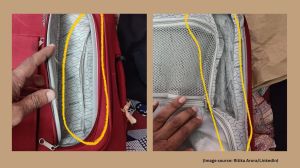Smart cards: a smart move?
There is a government proposal to issue microchip enabled machine-readable national identity cards for all citizens. The prime minister made...

There is a government proposal to issue microchip enabled machine-readable national identity cards for all citizens. The prime minister made an announcement to this effect on Independence Day. The home ministry, which has deliberated upon the idea for some time now, has done some groundwork for the same.
A feasibility study was also commissioned, which was conducted by a reputed software consultancy firm. The study recommended this course of action but with a few riders about the technological, infrastructural and funding requirements needed to implement it.
Its cost was roughly projected at Rs 2,500 crore. The huge amount raised many questions about the need for and timing of such an exercise. However, the home ministry observed that these cards were essential to solve recurrent problems rising out of improper and multiple identification documents.
The plan to provide such cards to one billion citizens is a landmark decision. Yet there are many questions that arise, as they have in several advanced nations that have sought to introduce such a measure.
The most important of them was the privacy concern. The possibility of government agencies continuously snooping on the citizens or hackers stealing vital personal data, were some of the disadvantages cited.
Soon after the September 11 attacks, US President George Bush examined a proposal to provide such ID cards but dropped it after overwhelming public opposition to the move. Recently Japan has been considering issuing national identity card to its 126 million citizens, which would include names, addresses, date of birth, gender and a new 11 digit ID number. This move was also severely opposed.
Japanese citizens are concerned that the system will be used for wrong purposes. In Europe, too, except for Finland most of the other countries have not gone for this system although there is widespread smart card use for many other applications, like driving licences and health insurance.
There is a plan, however, to provide a common multi-application card in 2003 in Europe, after considering all the relevant security issues.
Our own enthusiasm to introduce these cards needs to be examined carefully.
Going by the manner in which the voter identification card exercise was implemented some time ago, it is difficult to have confidence in the new exercise unless proper steps are taken from the beginning.
One of the first of these is to build a secure infrastructure to issue and process these cards at different locations across the country. Computers and machines, which would need to read these cards, need smart manning.
Information about one individual should be secured in a tamper-proof database, which needs to be made available nationally so that no single citizen can maintain multiple profiles in different states. Criminals can thus be checked and bogus cards eliminated.
Another important step is to uniformly provide for various services in the card. Today there is variance in the type of driving licences issued by various authorities across the country. Steps need to be taken so that the same set of data is maintained across the country.
A permanent unique ID address should be assigned to all citizens. Cards should be updated after a certain number of years, although basic information like name, permanent address, date of birth, gender and identification marks should not be tampered with.
For now the government has decided to implement the project as a pilot one in 13 states. This decision was arrived at during a meeting of the chief secretaries of various states in early September.
The pilot exercise in these states will be confined to a few select districts and blocks. This pilot should be able to provide a chip-enabled card to identify citizens and act as a one-point reference for various citizen-centric functions that would form a part of many of the e-governance initiatives being pursued across the country.
The successful implementation of the pilot will set the tone for the national project. Clearly, a lot more thinking and experience is needed if it is to be a successful one.





- 01
- 02
- 03
- 04
- 05


























